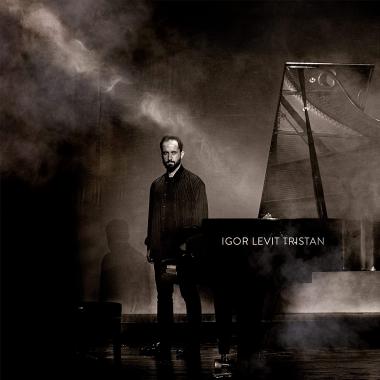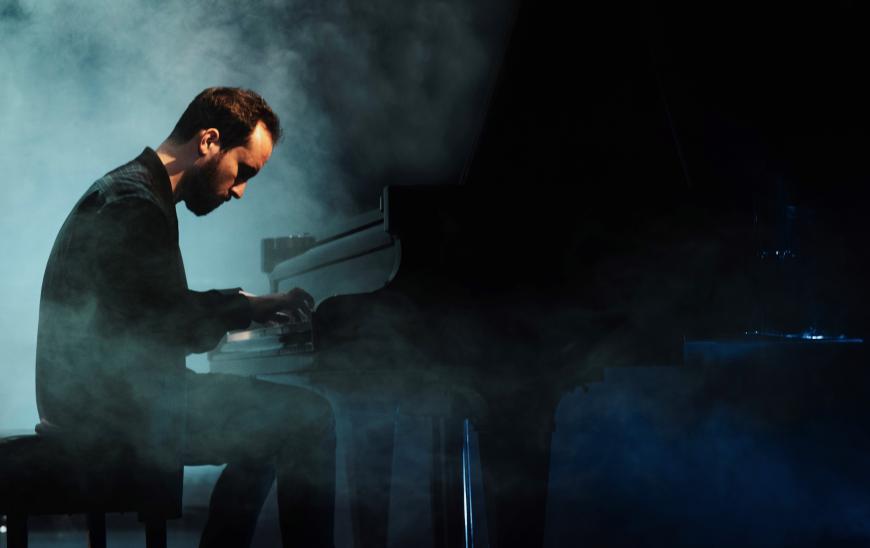
Here comes another concept album from the thoughtful Russian-German pianist Igor Levit, who garnered a lot of publicity from his daily house concerts streamed from Berlin during the early days of the COVID pandemic. This time, the darkly forbidding cover art of Levit’s Tristan (Sony Classical, two CDs) portends a serious 102-minute immersion into the maelstrom of Richard Wagner’s operatic meditation on the relationship between love, death, and redemption (just in time for the Los Angeles Philharmonic’s Tristan Project this month).
That’s one aspect of it. Yet another creative idea to ponder is the progression in music history that Levit lays out — from the revolutionary break with tonality that Wagner’s notorious Tristan chord made, through Gustav Mahler’s tiptoeing to the edge of tonality in his Tenth Symphony, and ultimately to Hans Werner Henze’s excursions beyond in his own Tristan for piano, orchestra, and electronic tape. It’s as if the instability that Wagner expressed in Tristan und Isolde and that Mahler pushed further has reached a logical conclusion in the near anarchy of Henze’s music.

Henze (1926–2012) is a major composer whom conventional wisdom doesn’t quite know what to make of — and thus, he has tended to be overlooked. One reason could be that his output caroms all over the stylistic map, though why the neglect has persisted in our more eclectic times is harder to explain. Also, it’s possible that the Marxist slant that runs through a good-sized portion of his music didn’t wear well over time. He conducted many recordings of his works for Deutsche Grammophon that disappeared from the catalog with remarkable haste each time they were issued and reissued (thank goodness for streams, where Henze’s recordings live on).
Levit’s recording of Henze’s Tristan, in tandem with Franz Welser-Möst leading the Leipzig Gewandhaus Orchestra, is just the second one to be made — and be glad we have it, although it presents a cooler, more refined, and thus less disturbing view of a powerful, big-thinking piece. In the context of this album, Henze’s Tristan takes the essence of Wagner’s and Mahler’s probings toward the limits of tonality and pushes it over the cliff.
A Prologue containing an unfinished solo piano Prelude leads things off peacefully, even resolving itself harmonically in A minor. But soon, orchestral chaos, decorated now and then with electronics (which are curiously muted on this recording), moves in as the piano solos become wildly atonal and angular. The first three bars of Brahms’s First Symphony suddenly pound their way into view, mocked by a flexatone. Henze has written that this music represents “the foe,” while denying the obvious implication that what he meant was to depict Brahms as the “pedantic opponent” of Wagner.

Up until about two-thirds of the way through, the piece seems to reflect Tristan’s anxieties, but at this point, following a “suite of tormenting, unstable hallucinations and grotesqueries,” the whole orchestra howls in pain. For Henze, who was traumatized by the 1973 military coup in Chile as well as the death of his friends and sometime librettists W.H. Auden and Ingeborg Bachmann when he was in the middle of composing Tristan, this represented “the death cry of the whole suffering world.” Henze’s own recording stunningly conveys the point, whereas the moment passes rather matter-of-factly for Welser-Möst, who has never been what you would call a hot-blooded musician. Then, at the end of a long atonal solo piano meditation, there is an amplified heartbeat and a child’s voice reciting an ancient Tristan poem as the strings hold out the moody opening chords of the Act 3 Prelude of Wagner’s Tristan — the only overtly audible quote from the opera.
Henze’s Tristan occupies about half of the album, and Levit goes it alone for the rest. He uses Zoltán Kocsis’s piano transcription of the opera’s Act 1 Prelude, leaving plenty of space between the notes at first while working up a suitable passion for the ecstatic climax.
Upon completing the Prelude and without missing a beat, Levit segues right into the Adagio from Mahler’s Tenth, in Ronald Stevenson’s piano transcription — and it is as if Mahler picked up where Wagner left off in a similar tonally adrift language. The tempo is very slow, the notes and chords taken one step at a time. The massive climax — which is sometimes said to refer to Mahler’s shock upon discovering that his wife Alma was having an affair with Walter Gropius — emerges in slow motion, and the huge dissonant chord at the peak really needs a full orchestra to make it speak; these melodramatic piano tremolos are no substitute.
Franz Liszt, a composer of maddeningly uneven quality but a crucial innovator for Wagner, Mahler, and Henze to build upon, gets the first and last words on the album. The famous, sentimental Liebestraum No. 3 acts as a sweet prelude to the torments of Henze, and the meditative rolling arpeggios and central grandstanding of “Harmonies du soir” wrap things up safely, far from the passions and angst that preceded it. As classical concept albums go, this is one of the more absorbing examples.



